|
|
|
The basic concept of hair transplantation is straightforward and easily
understood. The hair growing on the sides and lower part of the back
of the head is permanent in most people. It persists even in advanced
degrees of male pattern baldness because follicles in these locations
are not subject to the deleterious affects of the hormone DHT, a byproduct
of testosterone. The characteristics of the individual follicles move
with them when they are transplanted. Therefore, permanent hair will
remain permanent regardless of where it is transplanted, a phenomena
termed "donor dominance." This is the basis of hair transplantation.
In the process of hair restoration surgery, permanent hair is redistributed
to cover the areas of the head where the hair has thinned or has been
lost. No new hair is actually created; existing hair is just moved around.
Therefore, there is never a "net" increase in total hair volume.
In spite of this, a skillfully performed hair transplant procedure can
make a person "look" as though he or she has more hair, often
considerably more.
The process of hair restoration is an aesthetic exercise as well as
a technical feat. Re-distributing hair on a person's head is like painting
a portrait. The physician should attempt to create a natural looking
result that is consistent with the hair supply, the specific hair characteristics
of the patient, and most important, the patient's goals.
As with other forms of cosmetic surgery, the art is at least as important
as the surgical technique. The hair transplant surgeon must have a thorough
understanding of human facial anatomy; good basic surgical skills and
a thorough knowledge of different hair transplant techniques. The physician
must know the physiology of hair in depth, and understand basic medical
conditions that affect the scalp. He must be aware of, and be able to
critically evaluate, new developments in the field. Finally, the specialist
must study each patient carefully and tailor each procedure to the patient's
unique attributes and needs.
At Hasson & Wong they harvest donor hair by excising a narrow strip
of scalp from the back of the head in the permanent hair zone. This
method is extremely efficient and several thousand grafts can be obtained
from one donor strip. The resulting incision is closed giving a virtually
undetectable scar.
Below is a series of images that depict the process. Click on the images
for an enlarged view.
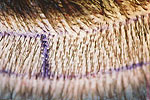
1. Donor area to be excised for dissection under a microscope. |

2. Medical Technicians disecting the donor section. |
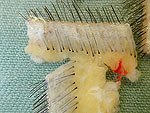
3. Slivers of scalp tissue with hair follicle groups. |
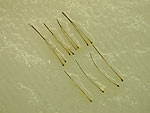
4. Grouped Follicular Unit grafts of one, and two follicles. |

5. High precision Incision Instrument. |
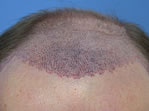
6. Incisions in the scalp to receive the follicular unit grafts. |

7. Jewelers forceps, used to handle the grafts. |
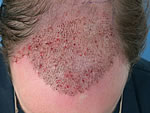
8. Recipient area with grafts inserted. |
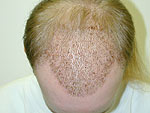
9. Three days after surgery. |

10. Ten days after surgery. |

11. Ten days after surgery. |

12. Four months post op. |
| |
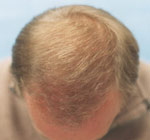
13. Eight months post op. |
|
Images provided by Hasson
& Wong, Vancouver.
|
|


Special Thanks To:
Dr Bill Rassman and Dr Bob Bernstein, who
contributed portions of their "Patients Guide to Hair Transplantation"
for use on this site. You can visit their excellent in-depth web
site at www.newhair.com
and request a full free copy of this, 300 page plus, book.
|
| |
|

